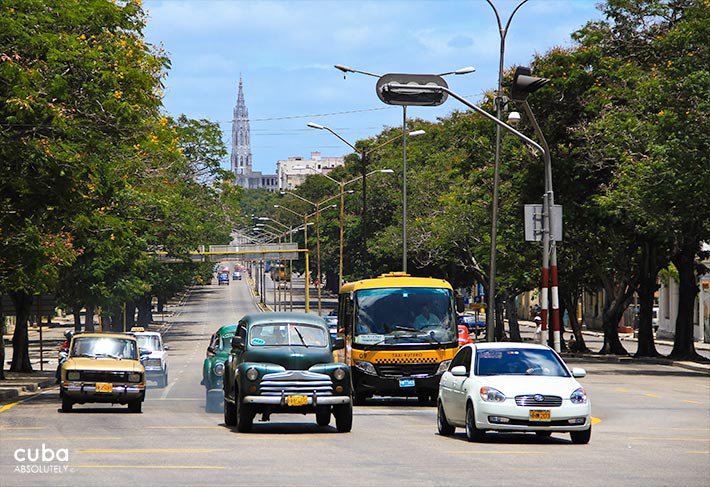This street was built by order of Governor Miguel de Tacón in 1836 and connects the intersection of Reina and Belascoaín streets to the Castillo del Príncipe. It was originally named Paseo de Tacón. Later, in honor of King Carlos of Spain, Paseo de Tacón was renamed to Carlos III Avenue and a statue of the Spanish king was placed here. And although it later changed its name to Salvador Allende Avenue, people have simply kept calling it Carlos III. A number of notable buildings are situated here, including the Veterinary Faculty of the University of Havana, the Plaza Carlos III shopping center and the Masonic Lodge.

Casa de Dionisio Velasco LH  3
3
Built in 1912, the building was conceived as a grand palace. Lavishly ornamented on its facade, it features overhanging balconies and windows which break the horizontal line of the balustrade. This mo …
 EclecticAdmission: FreeCárcel #51 esq. a Zulueta, Habana Vieja
EclecticAdmission: FreeCárcel #51 esq. a Zulueta, Habana Vieja 
Museo Numismático LH  3
3
Valued in approx 50 million dollars, the museum’s collections features medals, coins and banknotes from around the world, including an early 20 peso coin, the only one still existing of the ten produc …
 ModernAdmission: CUC 1Open: 9am-5pm Tues-SunObispo at 305, e/ Aguiar y Habana, Habana Vieja
ModernAdmission: CUC 1Open: 9am-5pm Tues-SunObispo at 305, e/ Aguiar y Habana, Habana Vieja 
Cruz Verde LH  3
3
The corner of Amargura and Mercaderes is known as Cruz Verde (Green Cross) due to a green-painted cross affixed to the northwest-facing cornerstone. The cross is one of twelve that were to be found al …

Alameda de Paula LH  3
3
The construction of the Alameda de Paula, one of Havana’s first promenades, was commissioned by Captain General Felipe de Fondesviela, member of the court of King Carlos III, and built by architect An …

Fachada del Teatro Fausto LH  3
3
Built in 1915, it was reconstructed and remodeled in 1938 according to a project which was awarded the Gold Medal by the National Architects’ Association. Its pure Art Deco façade is faced with a mixt …
 Art DecoAdmission: NonePaseo de Martí (Prado) esquina a Colón
Art DecoAdmission: NonePaseo de Martí (Prado) esquina a Colón 
Fuente de los Leones LH  3
3
Designed in 1836 by Italian artist Giuseppe Gaggini, the Carrara marble Fuente del Conde de Villanueva is popularly known as “Fuente de los Leones” for its four lions, one to each corner, resting on p …

Edificio del Retiro Odontológico LH  3
3
In 1953, architect Antonio Quintana won the competition for the design of a building which would house doctors’ offices, stores and other public spaces. The use of brise-soleil, popularized by the Fre …
 ModernL entre 23 y 21
ModernL entre 23 y 21 
Calle San Lázaro LH  3
3
Stretching 14 blocks, this street takes its name from the San Lázaro Hospital built in 1746. It was s=successively renamed as Calle Ancha del Norte, Calle del Basurero, Avenida Antonio Maceo and Aveni …

Edificio del Seguro Médico LH  2
2
This is one of the most significant exponents of the trends in architecture in Havana of its time. According to architect Pedro Martínez Inclán, “Quintana can boast about having given Havana…two build …
 Modern23 esquina a N
Modern23 esquina a N 
Aqvarivm LH  2
2
This modest aquarium has over 90 different species of freshwater fish and aquatic plants, displayed in small tanks. Tropical fish tanks are popular in many Cuban family homes and fish can be purchased …













